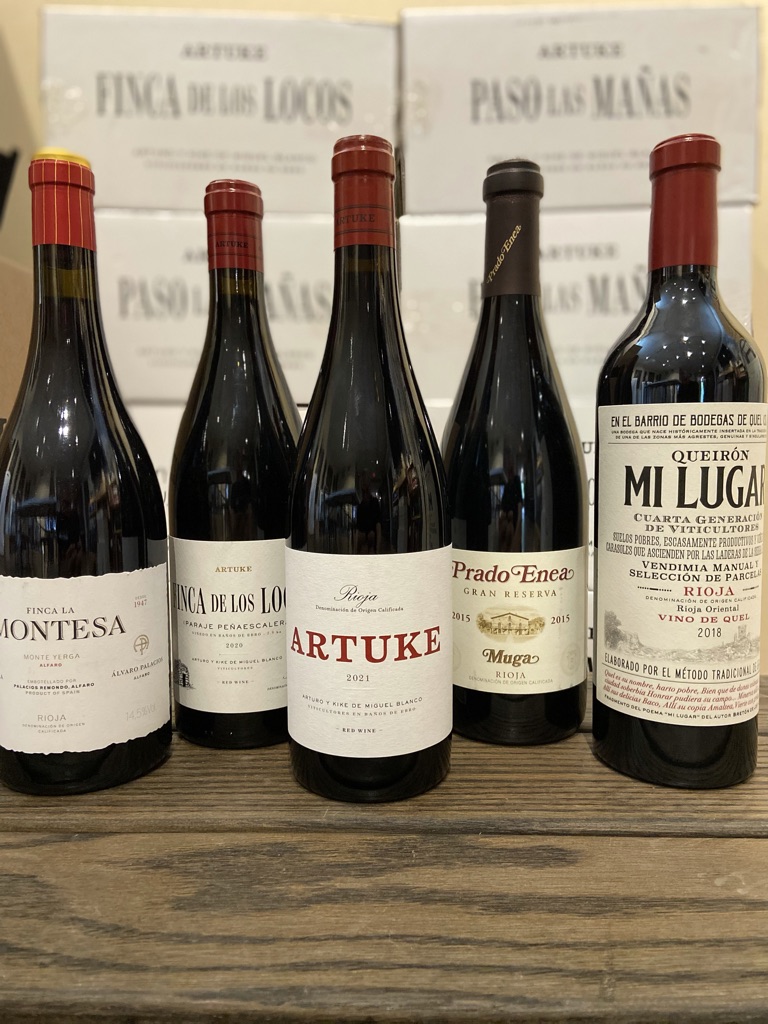I have recently been reading through Tim Atkin’s 218 page online publication, the 2023 Rioja Report. Although not as well known as Jancis Robinson MW, or the long retired Robert Parker, Atkin is one of the most thoughtful and intelligent voices in wine. I should note he is not only a Master of Wine but also highly respected by trade professionals. The publication is painstakingly detailed about the rising star of Rioja, and particularly the way producers in the region are returning to bottling wines from old, single vineyard and village designations. Although marketed as the “new” Rioja, these are really classic names that were commonly used nearly a century ago. For wine geeks it’s a thrilling read, worth the $25 to have on your iPad or e-reader.
One of Atkin’s most important points, and the biggest takeaway for 99% of wine drinkers, it that Rioja may be the last place where we can drink world class wines without needing to mortgage the house to buy a bottle. Walking the shelves of the Orange Avenue store, it is easy to see what he means. Glance along the Bordeaux rack and the top shelf, a collection of classified growth bottlings begin at $299 and go to $499 a bottle. These are not even First Growths, which we keep in the cooler and cost more than $1000 a bottle. Next to Bordeaux is the Burgundy rack, where the average bottle of village level wine is now $130, and Premier Cru and Grand Cru bottlings are often north of $200 and $400 respectively. Keep in mind these are not even the most sought after estates, which are even more expensive, but the good “values” we find.
Then make a turn and wander to the rack where we keep all the red wines from the Iberian peninsula. The first wines that jump out are the Artuke Rioja for $18, and the Palacios Remondo La Montesa Rioja for $19. These are both wines made by wineries designated by Atkin as “First Growth” in Rioja, for sell for less than $20. Even wines by the historic estate of Lopez de Heredia, also designated by Atkin as First Growth, cost less than $50. A further examination will reveal even more values, all far below $100 per bottle. The takeaway is that Rioja is not as well known, yet, and represents the value that Bordeaux and Burgundy offered in the early 1990’s when those regions were still modernizing. In Rioja, and other parts of Spain, the consumer can indulge in a great bottle of wine at a fraction of the price of the tomahawk ribeye to serve with it. Thankfully the region is big, and most producers make a lot of wine, so the value should be stable for a while. But, as the spotlight glares on Rioja from more sources the demand for the top wines will increase and so will the prices. So stop in and let’s talk about Rioja, below are a few examples of the many that we carry.

